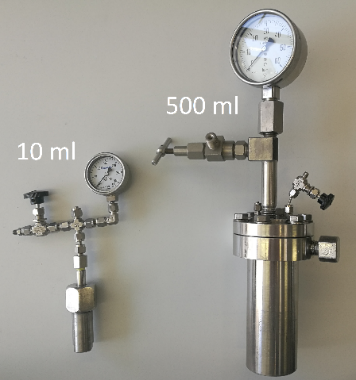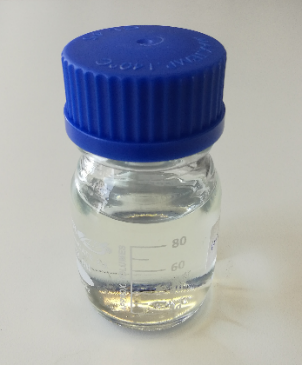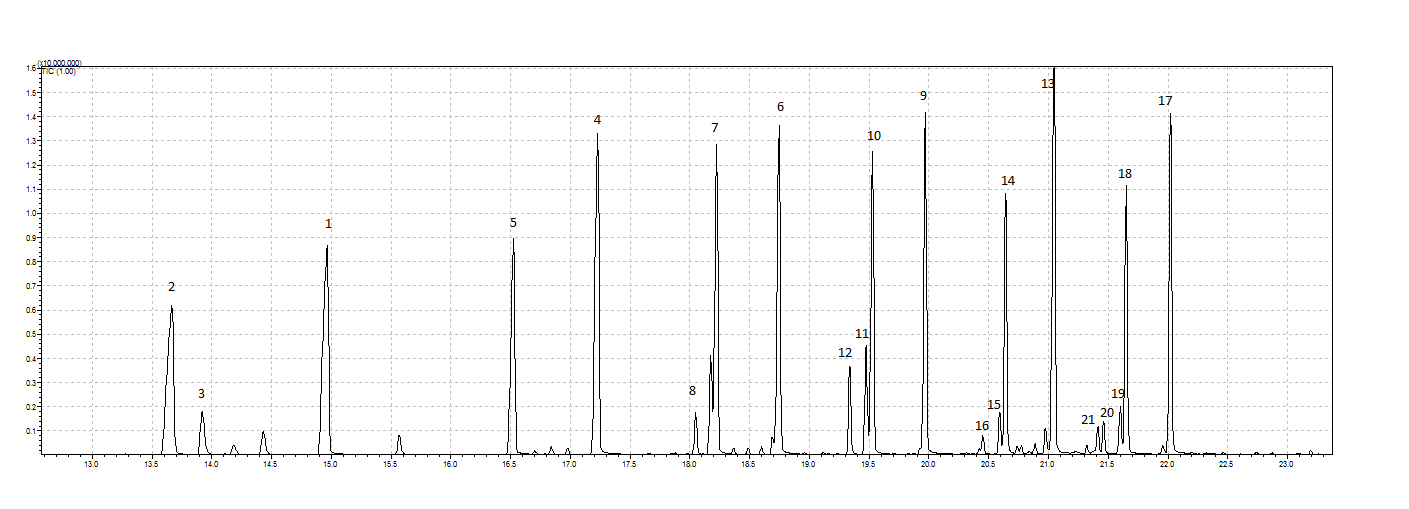Intermediate result from partners MPI-CEC, VKA-RWTH, Tec4Fuels, OWI
Result has been achieved on 16 April 2019 in month 7 of the project.
To agree with the EN590 norm it is important to know the physical properties and the combustion behavior of the resulting bio fuel. A large portion of the fuel will be made up by alcohols produced in the hydroformylation (HF) process. During the HF process not only linear but also branched alcohols are produced. Those are not commercially available. An alcohol mixture resembling the real composition 100 g of alcohols produced in the HF process at MPI in Mülheim have been sent to VTA-RWTH in Aachen for combustion testing.
- Objective: A realistic mixture of alcohols must be synthesized for useful results in the combustion tests. The hydroformylation (HF) reaction produces both linear and branched alcohols as products. The difference between linear and branched alcohols in combustion has not yet been clarified and is also not known in literature.
- Research: Experiments are usually run in 10 mL autoclaves. To deal with the amounts needed for combustion testing, a 500 mL autoclave reactor was used to synthesize the alcohols (Figure 1). After Reaction the products were separated and purified by distillation.
- Result: In a series of twelve experiments, sufficient amounts of C5-C10 alcohols have been produced, distillated (Figure 2) and analyzed regarding their composition and purity.
Figure 3 shows the GC-MS (Gas Chromatography–Mass Spectrometry) analysis of the final sample. The purity of this sample is >97 % of target alcohols (Figure 3 peaks 1-21). - What will it be used for: With the help of the synthesized sample it is possible to obtain meaningful results regarding the cetane-number, viscosity and density as well as the flash point of the resulting alcohol mixture.
- Impact: These are all important prerequisites for checking the compatibility of the resulting diesel fuel with the EN590 standard. In addition, the results can provide important hints as in which direction future investigations should go. Furthermore the workup distillation provided useful information for the later process.

Figure 1: Comparison of 10 ml (left) and 500 ml (right) autoclave for the synthesis of HF alcohols.

Figure 2: final alcohol mixture delivered to vka.

Figure 3: GC-MS spektrum of the final alcohol mixture.





